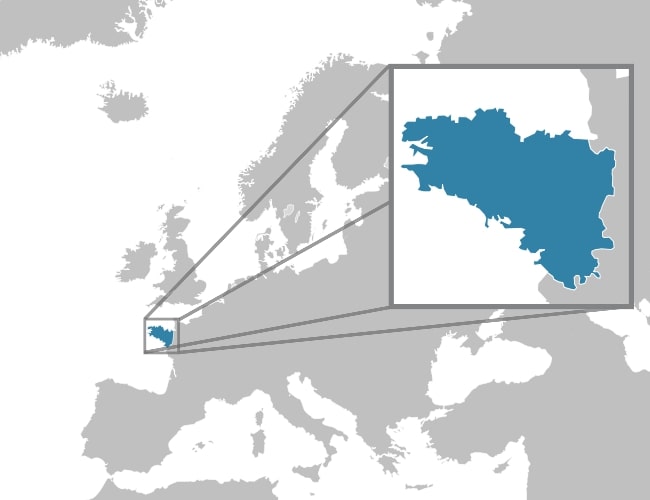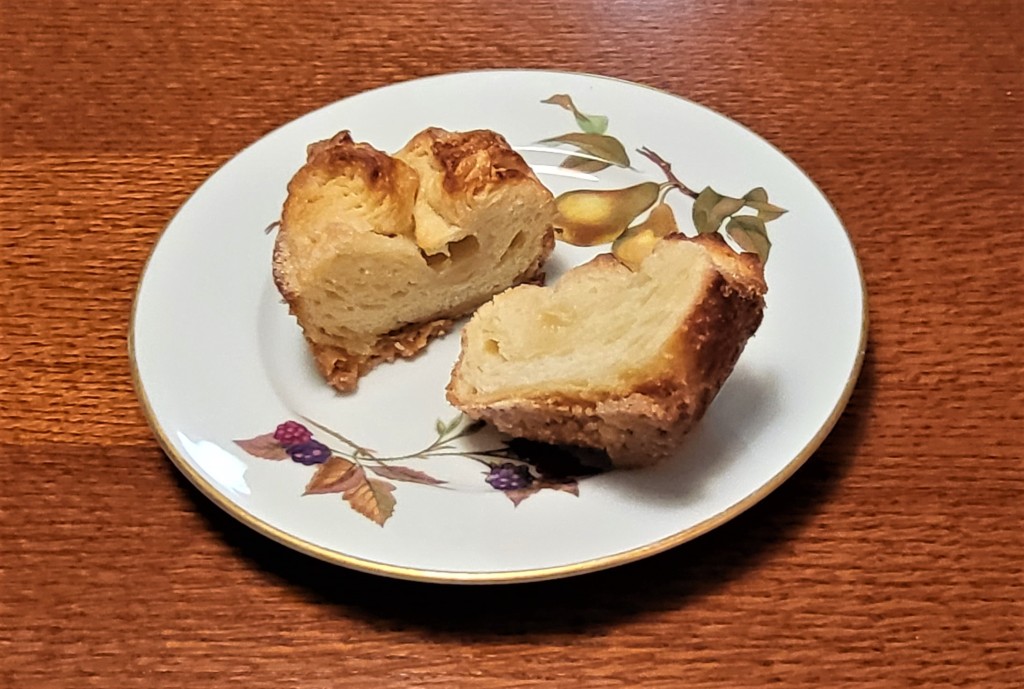
Grove Koger
Maggie and I have been enjoying the marvelous Breton pastry kouign-amann (kween yah MAHN) with our afternoon tea the last few days. If you’ve visited the region, you may know what I’m talking about. If not, then you’ll want to seek out a restaurant serving them or set aside time to make a pan yourself. Whichever route you choose, you’ll be glad you did. Really.
The name kouign-amann means “butter cake” in the Breton language, and the generous amount of salt routinely added to the region’s butter is one of the pastry’s secrets.

Kouign-amann is said to have originated in the mid-nineteenth century in the little fishing village of Douarnenez in westernmost Brittany. It seems that baker Yves-René Scordia had run out of his regular desserts and had to improvise a new one using only what he had on hand—butter, sugar, and left-over bread dough. His technique was much the same as that used in making croissants. That is, he rolled out and folded layers of dough repeatedly over layers of butter to create a flaky pastry, sprinkling salt and sugar over the layers from time to time. You can watch a professional baker making it on a Food Wishes video here.
In the most basic terms, kouign-amann is 30 percent salted butter, 30 percent sugar, and 40 percent flour. When baked, the result is a sweet, savory concoction that has earned an Indication géographique protégée, or IGP—awarded, according to France’s National Institute of Origin and Quality, to “an agricultural product, raw or processed, whose quality, reputation or other characteristics are linked to its geographical origin.” Known as the “fattiest pastry in all of Europe,” it even has its own holiday—June 20.

By the way, the individual pastries themselves are known as kouignettes, and it’s those that we’ve started buying from one of Boise’s restaurants, Ansots. The fact that it’s a Basque restaurant appears to be a coincidence—Brittany is several hundred miles from the Basque Country. Nevertheless, there they are, and we bring home a couple every time we have lunch at Ansots, which has become increasingly often. I’ve just talked to one of the restaurant’s employees, and she’s promised to try out the wonderful Portuguese custard tarts known as pastéis de nata. And that would make a visit to Ansots nearly as good as a visit to Portugal!
□□□
If you’ve enjoyed today’s post, please share!
